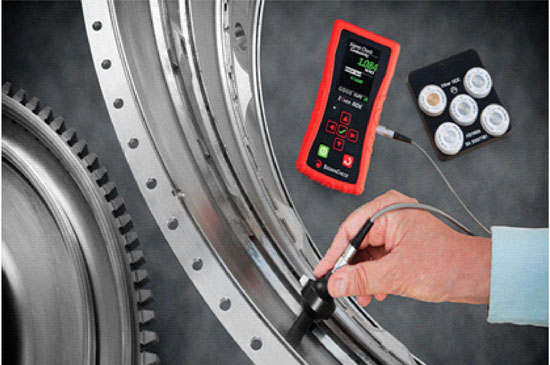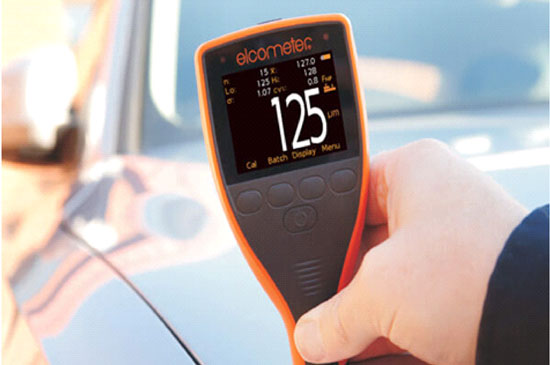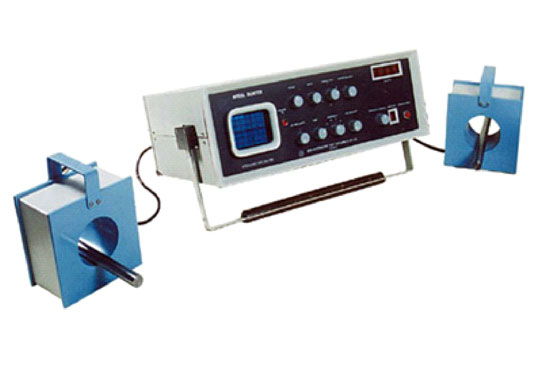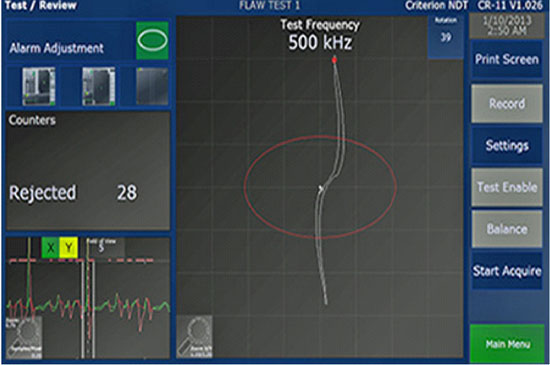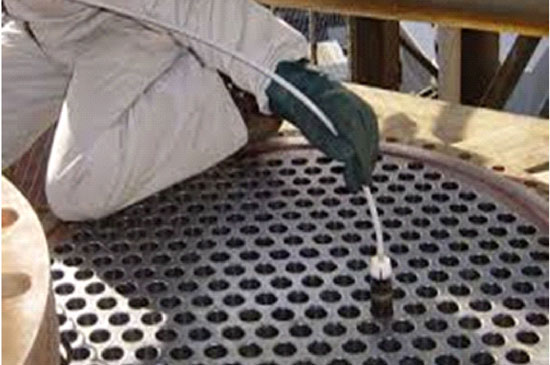- Eddy Current Testing a modern Non-Destructive Testing – NDT method that has become one of the prime tool for quality control of products, materials and structures at various stages of manufacturing and in-service inspections. Eddy Current Inspection can be used to find finest surface and subsurface flaws in any conductive material.
- Present Eddy Current NDT method has applications in Component Inspections, Heat exchanger tube inspections and other critical engineering applications.
- One of the uses of eddy current instruments is for the measurement of electrical conductivity. The value of the electrical conductivity of a metal depends on several factors, such as its chemical composition and the stress state of its crystalline structure. Therefore, electrical conductivity information can be used for sorting metals, checking for proper heat treatment, and inspecting for heat damage.The technique usually involves nulling an absolute probe in air and placing the probe in contact with the sample surface
COATING THICKNESS MEASUREMENT
- The thickness of non-metallic coatings on metal substrates can be determined simply from the effect of lift off on impedance. This method has widespread use for measuring thickness of paint and plastic coatings. The coating serves as a spacer between the probe and the conductive surface. As the distance between the probe and the conductive base metal increases, the eddy current field strength decreases because less of the probe's magnetic field can interact with the base metal. Thicknesses between 0.5 and 25 µm can be measured to an accuracy between 10% for lower values and 4% for higher values
- Eddy Current Sorter is extensively used in industries for segregation of mixed-up metals in the form of bars, rods pipes tubes, wires, electrodes, bolts, nuts, gears, pinions, machined components, sintered products , forged parts, & sections in ware house or production shop. It can sort dimensionally identical metal parts when they differ in chemical compositions, heat-treatment, metallurgical structure or case hardening. It is extremely useful for automobile industries, electrode manufacturing industries, heat-treatment shop, bar mills fastener industries, tube manufacturing industries, & for receiving the final inspection in quality control department.
- The two major applications of eddy current testing are surface inspection and tubing inspections. Surface inspection is used extensively in the aerospace industry, but also in the petrochemical industry. The technique is very sensitive and can detect tight cracks. Surface inspection can be performed both on ferromagnetic and non-ferromagnetic materials.
- Eddy current defect testing is a dynamic test, and is accomplished by running energized coils over an area to be tested. As the coils pass over a crack or flaw, the eddy currents are forced to deviate, and this deviation is detected by the eddy current instrument. A typical flaw defect response looks like the image shown. Alarm limits are adjustable so instrumentation triggers only on flaws that are deemed critical.
- Eddy current testing is a non-destructive testing method widely used to examine tubing in heat exchangers, steam generators, condensers, air coolers and feedwater heaters.Eddy current testing of tubes is an effective way of assessing the condition and lifespan of tubes, particularly in the power generation, petrochemical, chemical, fertilizer and air conditioning industries. The technique is applied to detect corrosion, pitting, cracks, erosion and other changes to both the tube’s interior and exterior surfaces.It is a high-speed inspection method and one of the major advantages is that it can be performed through paint and coatings. The technique is only suitable for non-ferrous material such as stainless steel, copper and titanium. We also perform remote field and magnetic biased eddy current testing on carbon tubing.

